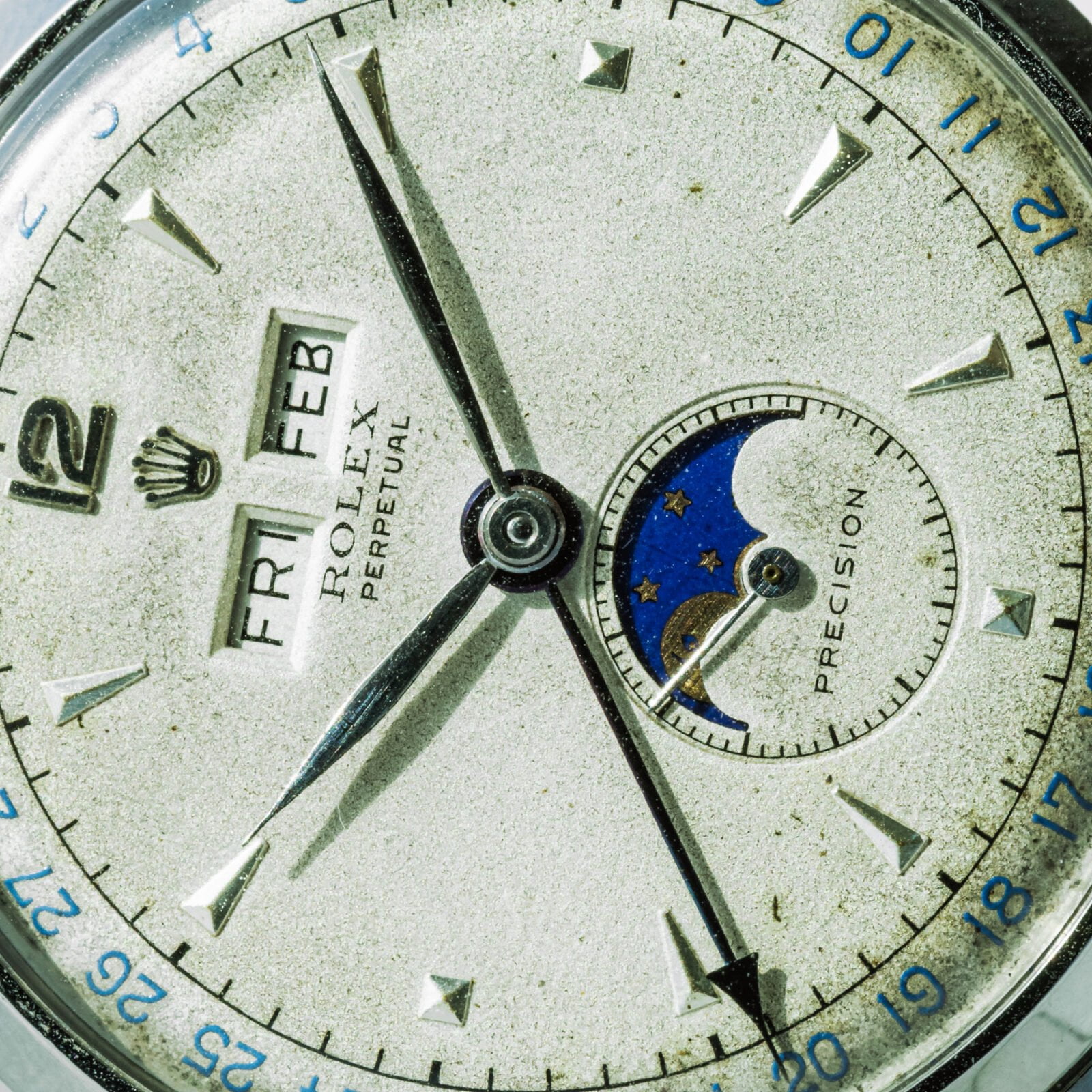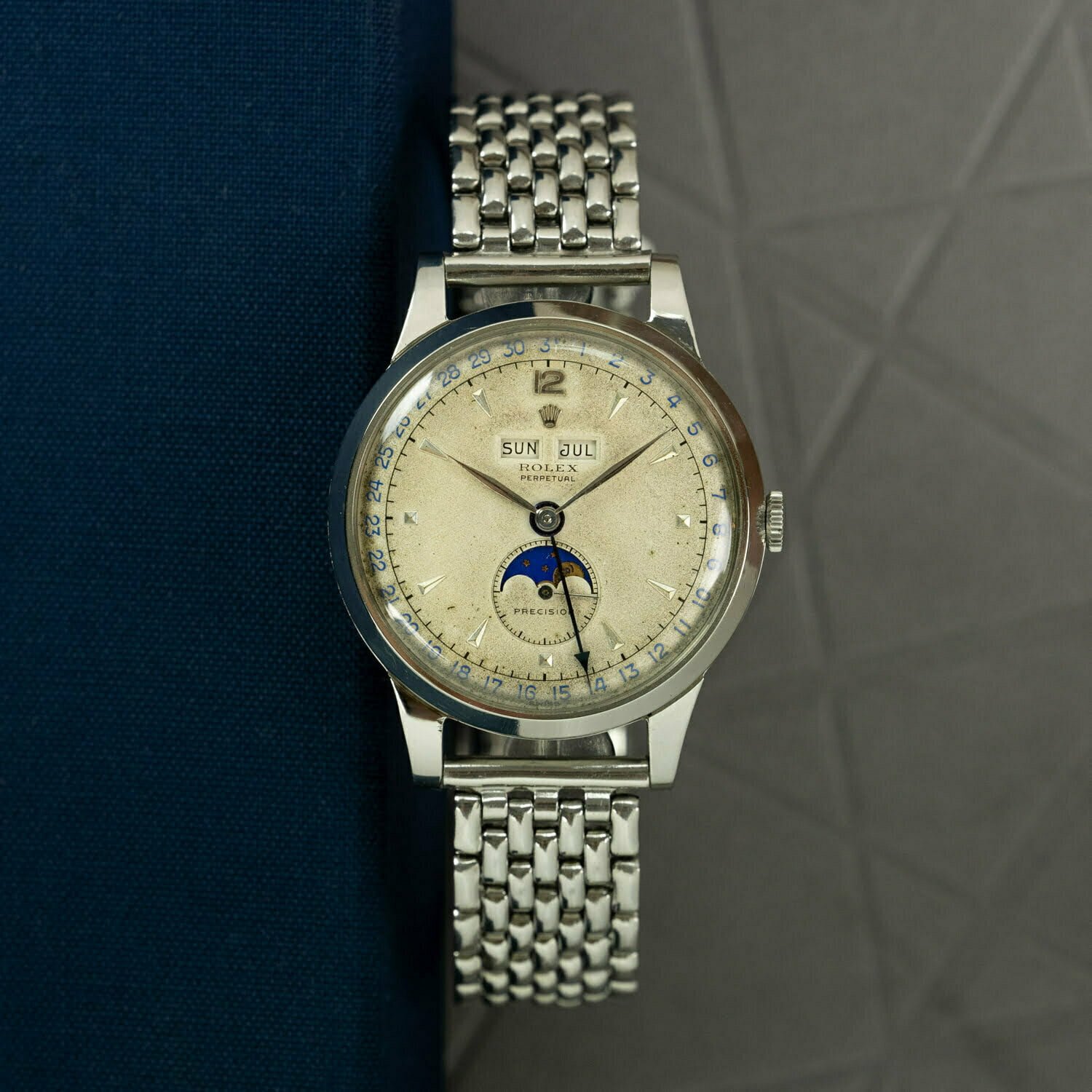

8171
The Padellone (Italian for large frying pan) is one of the most -and few- complicated watches Rolex has ever cooked up.
Produced for just a short period of time in the early 1950s, it is simultaneously one of the most curious and most mythical pieces ever made by Rolex. By the 1950s, Rolex was increasingly known for producing tough, no-nonsense watches with its iconic waterproof Oyster case. The 8171, however, not only featured a dressy non-Oyster (and thus non-waterproof) case, but an uncharacteristically large one at that. Sized at a healthy 38 mm, it was much larger than the average dress watch from that era, with Italian collectors therefore lovingly dubbing it "Padellone". The 8171 was only produced in small numbers for a handful of years, from 1949 until around 1952, making it an extremely rare and desirable piece.
Aside from its oversized appearance, the Padellone stood out for its complications as well. In fact, with its triple calendar and moonphase functionality, the Padellone (together with its smaller Oyster cased sibling, the ref. 6062) are the most complicated watches ever fully produced in-house (Aegler) by Rolex. In comparison, the more complicated Rolex Datocompax ‘Jean Claude Killy’ from the same era—a watch with a chronograph function in addition to the full calendar and moonphase—was powered by the Valjoux caliber 72C movement.
It features an exceptionally pleasing design, consisting of a rather large round case with strong lugs and sharp polished bezel, here executed in stainless steel. Meanwhile, the dial is beautifully proportioned, aided in part by the rather large size. The bright blue pointer date scale on the rim of the dial is given ample space, while the day and month apertures are harmoniously placed opposite to the moon phase, with the Rolex signature cleverly placed between the two. Finally, the arrowhead and pyramid-shaped hour markers together with the leaf-shaped handset infuse the watch with a quintessential mid-century quality.
This historically important specimen dates back to 1951 and is in charming condition with a grainy ivory dial that has patinated to a pleasing grayish color. The case features thick lugs and sharp lines, indicating that it has been handled with care in the past. Since this case does not feature the serial number between the lugs -as one can see on the Oyster case Rolex'- but rather on the caseback itself it is particularly important it was only sparsely polished. The period-correct stainless steel straight-end beaded Gay Frères bracelet completes this piece of art.









